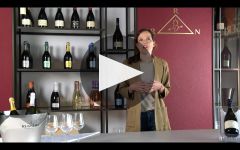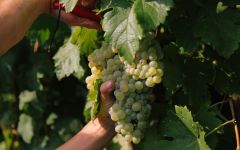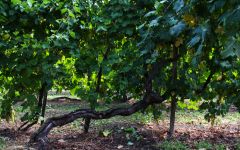Ruggeri Argeo Prosecco
-
James
Suckling




Product Details
Your Rating
Somm Note
Winemaker Notes
Very pale straw yellow with greenish glints, perfect clarity with abundant, persistent, fine perlage. The fresh, elegant bouquet offers flowery sensations merging into a typically fruity harmonious complexity with intense aromas reminiscent of golden apple. Fresh, delicate, balanced on the palate and light in alcohol with a long fruity finish.
Perfect as an aperitif, ideal with fish, and goes well with hors-d’oeuvres and light first courses.
Professional Ratings
-
James Suckling
A frothy Prosecco full of green apples, peach and chalk on the nose followed by a similar echoing on the palate. Fresh, fizzy and very approachable.








In the 1800s Eliseo Bisol left further documentary evidence of his activity as a distiller. Around 1920, his son Luigi Bisol, an oenologist, built a winery in Montebelluna. In 1950, Luigi’s son Giustino Bisol established the Ruggeri winery in Santo Stefano di Valdobbiadene to produce and promote the sparkling Prosecco Superiore and Cartizze wines.
Today the winery is run by Paolo Bisol, who is assisted by his children Giustino and Isabella.

A term typically reserved for Champagne and Sparkling Wines, non-vintage or simply “NV” on a label indicates a blend of finished wines from different vintages (years of harvest). To make non-vintage Champagne, typically the current year’s harvest (in other words, the current vintage) forms the base of the blend. Finished wines from previous years, called “vins de reserve” are blended in at approximately 10-50% of the total volume in order to achieve the flavor, complexity, body and acidity for the desired house style. A tiny proportion of Champagnes are made from a single vintage.
There are also some very large production still wines that may not claim one particular vintage. This would be at the discretion of the winemaker’s goals for character of the final wine.

One of the world’s most popular and playful sparkling wines, Prosecco is a specialty of northeastern Italy, spanning nine provinces of the Veneto and Fruili-Venezia Giulia regions. A higher-quality version of Prosecco wine that must meet more stringent production requirements is known as Prosecco Superiore and must come from the more rugged terrain between the towns of Valdobiaddene and Conegliano. Prosecco can be produced as a still wine, a semi-sparkling wine (“frizzante”), or a fully sparkling wine (“spumante”)—the latter being the most common. While Prosecco wine is typically produced in a “brut” (dry) style, its fresh and fruity character makes it seem a bit sweeter than it actually is. “Extra dry” styles, incorporating higher levels of residual sugar, are quite popular, however.
Prosecco wine is made from the Glera grape, which was formerly and confusingly called Prosecco, these wines are notable for pleasant flavors of peach, pear, melon, green apple, and honeysuckle. Lower pressure during the carbonation process (also called the tank method) means that the bubbles are lighter and frothier than in Champagne or other traditional method sparkling wine, and less persistent. Prosecco is also a great choice to blend with orange juice for mimosas for a classic brunch beverage.
